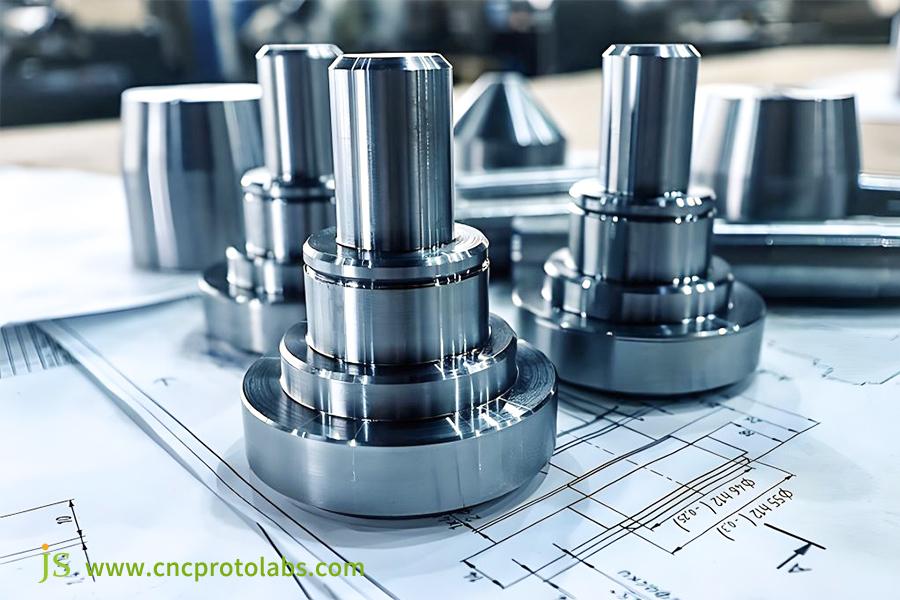The dimensional measurements of a CNC turning part are squarely in the exact middle of the tolerances on the drawing—not just 100% qualified, but with the best surface finish, longest service life, and perfect assembly experience.
On the other hand, another part, while within tolerance, behaves like a "dancer on the edge of a cliff," wavering back and forth between the upper and lower specifications, creating potential wear, noise, and assembly issues.
This micron difference is the line between "precision craftsmanship" and "manufacturing." This tutorial, formulated based on JS Precision's real-world CNC turning experience, will allow you to fully understand tolerance control in CNC turning, avoid pitfalls, and produce flawless CNC turning parts.
Key Answer Summary
| Control Dimensions | Core Strategies | Key Impacts |
| Process Planning | Unifying benchmarks, optimizing machining sequences, and addressing complex structures (such as thin walls). | Plays a decisive role. Correct processes are the foundation for achieving tolerances and avoiding systematic errors. |
| Material Properties | Differentiating between heat resistance for aluminum, hardness resistance for steel, and springback resistance for plastics. | Fundamental limitations. Materials determine the inherently achievable range and difficulty cost of tolerances. |
| Cost Leverage | Relaxing non-critical tolerances. Tight tolerances (e.g., within ±0.01mm) can lead to exponentially higher costs. | Key Balance. Finding the optimal balance between functionality and cost is the key to success. |
| Parameter Optimization | Finding the precision sweet spot within the "speed-feed-depth-of-cut" system to control cutting forces and heat. | Efficient fine-tuning methods. Directly improve surface quality and dimensional stability at virtually zero cost. |
| Tolerance Marking | Selecting geometric tolerances (such as runout and cylindricity) based on function, leveraging the principle of maximum material density (Ⓜ). | Strategic design. It can lower manufacturing costs and more reliably guarantee assembly performance. |
Why Is It Reliable? JS Precision's In-House Precision Control Methods Are Publicly Disclosed For The First Time
To convince you of all this guide, let's first emphasize JS Precision's strengths. We have 18 years of practical experience in CNC turning, serving 12 demanding industries, including aerospace, medical devices, and automotive electronics.
For example, we once machined a thin-walled part for a minimally invasive surgical instrument for a medical company. The part was only 1mm thick and required a tolerance of ±0.005mm. By fixture and cutting parameter optimization, we finally increased the yield rate from the initial 65% to 99.2%.
We also solved an auto customer's problem of chattering of a thin shaft, where we reduced the cylindricity error from 0.01mm to within 0.003mm, which met engine transmission requirements. These experiences are not theory proposals but are a result of us trying repeatedly to solve customer pain points and process optimization.
This guide is a systematic distillation of our shop experience, and every suggestion has been tried and proven in actual production, so you can be confident that it will allow you to achieve the tolerances you want when CNC turning parts.
JS Precision, with its expert CNC turning services, can accurately address a variety of tolerance problems. Simply provide us with a part drawing, and we will immediately evaluate and develop a solution. Ordering is simple and efficient, allowing you to easily obtain high-quality CNC turning parts.
Why Is Tolerance So Critical To Success Or Failure In Precision Turning?
Having discovered the credibility of the guide, we first have to understand why tolerances determine success or failure in precision turning, starting with the nature of tolerances.
The Nature of Tolerances
Tolerances represent a compromise among function, manufacturability, and cost. For example, in CNC turning parts for hydraulic systems, too loose a hole tolerance will result in oil leaks, while too tight a tolerance will be costly. A balance must be made.
The Cost of "Perfection"
Pursuing absolute zero tolerance is not scientific and is uneconomical. As an example, to machine 20mm diameter CNC turning parts, the achievement of zero tolerance requires a $300,000 ultra-precision machine tool. The machining time is increased from 1 hour per part to 4 hours per part, and the cost per part from $15 to $80. ±0.005mm tolerance already meets the requirement, yet over-pursuit is wasteful.
The Central Tenet of Tolerance Management
1. Ensuring Interchangeability: Control of tolerances, and different batches of CNC turning parts can be seamlessly assembled. For example, gears in automotive transmissions cannot be assembled if the shaft diameter tolerances are not matching.
2. Improve product performance: Tolerances directly affect the friction, sealing, and power transmission efficiency of mating parts. For example, improper tolerances between engine pistons and cylinder liners can lead to reduction of actuation force or premature wear.
3. Control lifecycle costs: Good tolerances reduce component wear and failure. For example, CNC turning bearing seat components reduces maintenance and overall cost.
To further illustrate the differences, the following table is provided:
| Comparison Item | Pursuing Absolute Zero Error | Reasonable Tolerance (e.g., ±0.005mm) |
| Machine Purchase Cost | About 300000 US dollars. | Approximately 120,000 US dollars. |
| Single Piece Processing Time | 4 hours per piece | 1.2 hours per piece |
| Single Piece Processing Cost | 80 US dollars | 20 US dollars |
| Yield Rate | Yield Rate | 99% (stable process). |
| Satisfaction of Actual Functional Requirements | Over-satisfied with no additional value. | Fully satisfied with high cost-effectiveness. |
JS Precision is well versed in balancing tolerances and costs in CNC machining turning. We will design custom tolerance solutions based on your part's functional requirements, ensuring the quality of CNC turning parts while effectively controlling costs, providing cost-efficient CNC turning services.
Complex Turned Parts Precision Tolerance Control: Strategies And Methods
Holding tolerances of complex parts in CNC turning is challenging and requires special precautions. The following methods fulfill these requirements for four common parts.
1.Thin-walled Parts: Minimizing Tool Release and Deformation
- Maintain the smallest possible tool engagement (0.1-0.2mm) to reduce cutting forces.
- High spindle speed (3000-5000 rpm) to minimize the tool contact time.
- Use special clamps such as elastic collets to ensure secure clamping.
- Elevated cutting fluid pressure (≥8MPa) to reduce cutting heat deformation.
2.Slender Shaft Parts: Eliminating Re-dressing Tool Chatter and Bending
- Use a steady rest or steady rest for vibration damping and extra support.
- Reduce feed rate (0.05-0.1mm/r) to alter harmonic vibration frequency.
- Use stiff tools such as carbide to minimize tool deformation.
3.Irregular-shaped and Eccentric Parts: Avoiding Re-clamping Errors
Through the application of the B-axis and power head of a turning center, multi-angle machining (e.g., shaped slots and eccentric holes) is possible in a single clamping, free from re-clamping errors and with the tolerance accuracy of CNC turning parts.
4.Internal Cavity and Deep Hole Machining: Overcoming Chip Evacuation and Insufficient Tool Rigidity
- Utilize high-pressure internal coolant tools featuring inner channels for chip evacuation.
- Segmented cutting (retract every 5-10mm to eject chips) with a given chip breaking strategy.
- Layered machining (roughing to remove stock, finishing to maintain accuracy) with long rigid tools for chatter reduction.
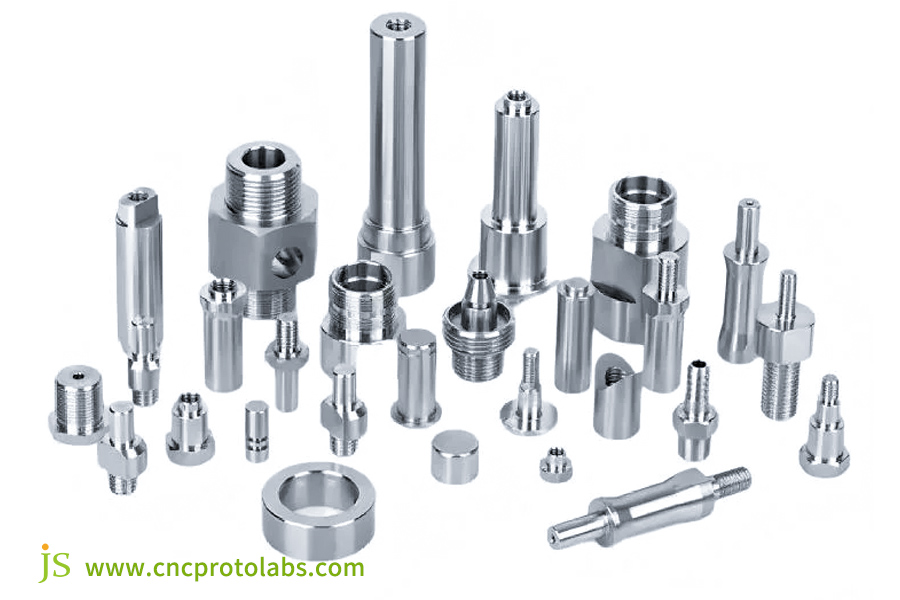
In What Ways Do Material Properties Directly Influence Tolerance Control Strategy Development?
Materials' properties vary significantly, which influences CNC turning tolerance planning. A method that is not well suited can easily lead to over-tolerance and poor surface finish. The following are four common materials' characteristics and countermeasures:
| Material Type | Key Characteristics | Tolerance Control Strategies | Applicable CNC Turning Parts Examples |
| Aluminum Alloy | Prone to tool adhesion and has a large thermal expansion coefficient. | 1. Use a sharp cemented carbide tool tip to reduce tool adhesion. 2. Use sufficient cutting fluid for cooling. 3. Perform constant temperature treatment (20℃±2℃) before and after processing to reduce thermal deformation. | Aerospace components, electronic device housings |
| Stainless Steel/High-Temperature Alloy | Severe work hardening and large cutting force. | 1. Maintain a constant and sufficient cutting depth (≥0.3mm) to avoid "scraping" on the hardened layer. 2. Select TiAlN-coated tools. 3. Reduce the feed rate to decrease the impact of cutting force. | Chemical equipment parts, engine high-temperature components |
| Engineering Plastics | Elastic recovery and moisture absorption expansion. | 1. Use a sharp positive rake angle tool (rake angle ≥15°) to reduce elastic recovery. 2. Control the processing environment humidity (≤50%) to avoid moisture absorption expansion. 3. Reserve 0.01-0.02mm of "overcut" compensation. | Medical equipment accessories, electronic insulation parts |
| Brass | Soft material, prone to "tool marks". | 1. High spindle speed (≥4000r/min). 2. Fast feed rate (0.15-0.2mm/r). 3. Select high surface finish tools to ensure surface quality and dimensional stability. | Sanitary fittings, precision instrument connectors |
JS Precision has experience in machinability of various materials and can develop precise tolerance control plans for custom CNC turning manufacturing projects. Should you need to machine aluminum alloy, stainless steel, or engineering plastic parts, we can meet your tolerance requirements and schedule production soon thereafter ordering, shortening your project cycle.
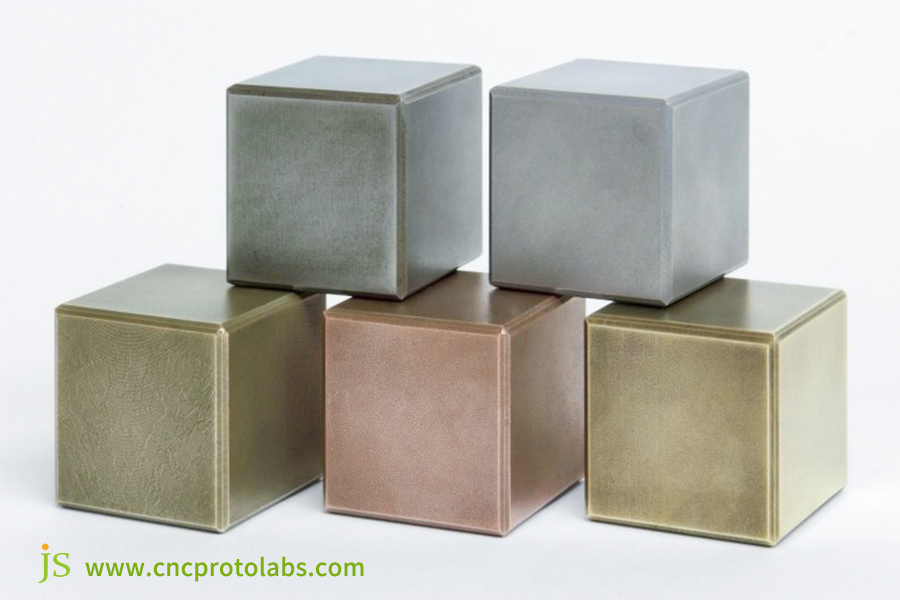
Five Steps: A Systematic Roadmap To CNC Turning Tolerances Mastery
After mastering tolerance control methods for complex parts and materials, there needs to be a process in place to ensure that all CNC-turned parts are in tolerance. The following is a five-step process outlined by JS Precision.
Step 1: Design Review and Tolerance Rationalization
In the early stages of a project, discuss with the customer/design department to relax tolerances on non-critical dimensions based on part function. For example, for CNC turning parts for sensor housings, the critical aperture is ±0.005mm, whereas the outside diameter is relaxed to ±0.02mm to reduce complexity.
Step 2: Process Planning and the "Unified Datum" Principle
Develop an optimal machining sequence to ensure consistency in measurement standard, process standard, and design standard. For example, for CNC turning parts for shafts, both end center holes are used as the standard to avoid inconsistencies caused by different standards.
Step 3: Prepare the "Iron Triangle" of Machine Tool, Tool, and Fixture
Select a high-accuracy CNC turning machine (positioning ≤ 0.001mm), use pre-established micro-grain carbide tools, and employ fixtures such as hydraulic chucks to reduce errors.
Step 4: Precise Adjustment and Optimization of Cutting Parameters
Determine the three most important cutting parameters from the material, nature, and tolerances. For instance, for a long stainless steel shaft, determine a speed of 80m/min, a feed of 0.08mm/r, and a depth of cut of 0.2mm for both precision and efficiency.
Step 5: Error-Proofing and Proactive Quality Control Throughout the Process
- First-Part Inspection: 1-2 piece samples per batch CMM measurement of critical dimensions. Only qualified pieces can proceed to mass production.
- In-Process SPC: Sample every 20 pieces to find out fluctuations in time.
- In-Machine Measurement: On-line dimensional measurement and automatic tool compensation to maintain tolerances.
The Cost Reality: How Do Tight Tolerances Affect Unit Price?
Most customers wonder why tighter tolerances make parts more expensive. In reality, the cost rises exponentially. The following shows the actual impact of tighter tolerances on CNC turning prices.
Exponential Rising Curve
Tighter tolerances lead to exponentially higher costs. For example, for ∅15mm CNC turning parts, ±0.05mm is $12, ±0.01mm is $18, and ±0.005mm is $36. This is due to the fact that equipment, tooling, and process have extremely high demands.
Cost Drivers
To clearly show the drivers of rising costs, the following table is provided:
| Cost-Driving Factor | Specific Impact Description | Change Example from Tolerance ±0.05mm to ±0.005mm |
| Equipment Depreciation | High-precision machine tools have higher purchase costs, leading to increased depreciation expenses. | From ordinary CNC turning machines (80,000 US dollars) to Swiss-type lathes (250,000 US dollars), annual depreciation increased from 16,000 US dollars to 50,000 US dollars. |
| Time Cost | Low feed rate and frequent measurement lead to prolonged processing time. | Processing time extended from 40 minutes per piece to 180 minutes per piece, daily output reduced from 36 pieces to 8 pieces. |
| Tool Cost | More wear-resistant and precise tools are required, leading to shorter replacement cycles. | From ordinary cemented carbide tools (50 US dollars per tool, usable for 50 pieces) to microcrystalline cemented carbide tools (200 US dollars per tool, usable for 30 pieces), single-piece tool cost increased from 1 US dollar to 6.67 US dollars. |
| Scrap Rate Risk | Tighter tolerances increase the likelihood of scrap. | Scrap rate increased from 0.5% to 10%, scrap loss increased from 0.6 US dollars to 36 US dollars per 100 pieces produced. |
| Quality Inspection Cost | Higher-precision inspection equipment and longer inspection time are required. | From calipers (200 US dollars) to coordinate measuring machines (150,000 US dollars), inspection time extended from 2 minutes per piece to 15 minutes per piece, single-piece inspection cost increased from 0.1 US dollar to 1.25 US dollars. |
JS Precision will provide you with transparent CNC turning price quotes, itemizing each cost based on the tolerance requirements of the part. We will help control your costs by optimizing the process while not sacrificing quality, so you receive CNC turning parts with your tolerance requirements at a reasonable price. You will receive a clear quotation when you place an order, with no hidden fees.
The Micron War: How To Achieve Tolerance Targets By Reducing Parameter Optimization?
In CNC turning, parameter optimization in cutting is the key to achieving tolerance targets. Micron-level settings also have an impact on resultant tolerances. What follows is an explanation of how to adjust parameters to win the "micron war."
Cutting Speed
Higher cutting speeds give better finish and lower cutting forces, but a balance between tool life and chatter must be established. For example, for aluminum alloy CNC turning parts, 300-500 m/min guarantees Ra ≤ 0.8 μm. Beyond 600 m/min raises the tool wear and causes deviation.
Feed Rate
Reducing the feed rate improves roughness and accuracy but at the expense of efficiency. For example, when CNC turning parts with ±0.003 mm accuracy, reducing the feed from 0.1 mm/r to 0.03 mm/r reduces scratches and improves accuracy. A compromise is required.
Depth of Cut
For finishing, small depth of cut allows stable and controlled deformation. For roughing, 1-2 mm is employed to cut stock, and for finishing, 0.05-0.1 mm is employed for reducing stress and deformation while maintaining tolerance.
A Very Commonly Overlooked Parameter: Tool Tip Radius Compensation
Properly compensating for tool tip radius ensures contour dimensions. For example, on a CNC turning part with an R2mm radius, a 0.4mm tool tip will be out of tolerance without compensation but will be a true R2mm with compensation.
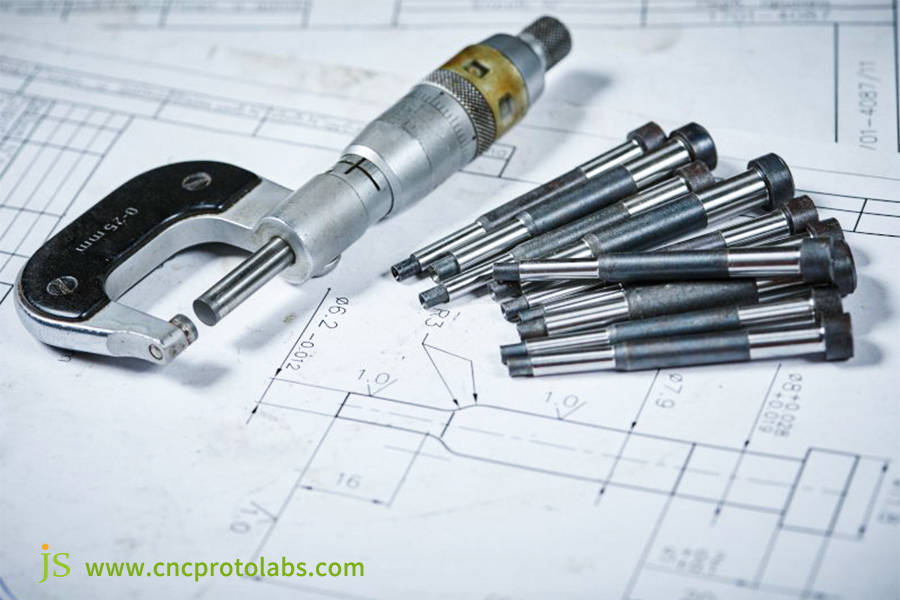
Selecting The Optimal Geometric Tolerance For Turned Parts
In addition to dimensional tolerances, geometric tolerances (position and form tolerances) also impact the assembly and operation of CNC turning parts. These can be overlooked in design, resulting in parts that possess the desired dimensions but are not usable. The following is a guideline on how to select the optimal geometric tolerances.
More than Dimensions: The Importance of Geometric Tolerances
Geometric tolerances control part shape, orientation, position, and runout. Cylindricity, for example, manages errors in cylindrical surfaces, and perpendicularity manages end-face axis perpendicularity. Although not readily apparent, these tolerances significantly affect CNC turning part performance.
Function-Driven Selection
Geometric tolerance selection must be treated part-function-wise. Different functional parts have different requirements:
- Concentricity/Runout: For motor shafts and other rotating balance-requiring shafts. Concentricity of ≤0.005mm and runout of ≤0.003mm are required to prevent vibration.
- Cylindricity: For oil seals and shaft journals. ≤0.002mm is required to prevent oil leakage.
- Parallelism/Perpendicularity: For locating parts, e.g., equipment flanges. Perpendicularity of ≤0.008mm and parallelism of ≤0.01mm in order to prevent tilting.
The Power of the "Maximum Material Principle"
The principle of maximum entity(Ⓜ) enlarge dimensional tolerances during assembly to reduce costs. For example, for a ∅10mm (±0.01mm) hole, maximum position accuracy can be optimized, ensuring assembly and simplicity.
JS Precision engineers are experts at various geometric tolerance specifications and can pinpoint the optimum geometric tolerance solution to your functional needs of CNC turning parts. Our custom cnc turning manufacturing service meticulously manages form and position tolerances so that parts meet assembly as well as functional requirements.
Case Study: The ±0.003mm Challenge - The Birth Of High-Precision Aerospace Sensors
Walk through an actual-case scenario, as JS Precision breaks the ±0.003mm tolerance barrier to manufacture high-precision aerospace sensors.
Customer Pain Points
An aerospace company required a fuel control valve sensor housing (a precision CNC turning part) to be made of high-temperature-resistant Inconel 718 alloy (an easily work-hardened material with large cutting forces).
The mating hole is ∅10mm ±0.003mm and cylindricity of <0.002mm. The former three suppliers' yield rates were less than 60%, which was costly and time-consuming for R&D development.
JS Precision's Systematic Solution
After receiving the demand, we established a special team to develop a plan:
1. Tolerance Analysis: After consulting with the customer, we decided that the tolerance on non-mating surfaces (which was initially ±0.01mm) did not impact performance. We proposed reducing the tolerance to ±0.03mm so that the machining process could be eased.
2. Equipment and Process: We selected a Swiss-type sliding lathe with a ≤0.0005mm spindle concentricity (with guide bushing for stability) and a TiAlN-coated micro-grain carbide fine boring cutter (hardening-resistant and wear-resistant).
3. Optimized Parameters: "Micron-level" adjustment was applied, high speed (1200 rpm), low feed (0.02 mm/r), minimal depth of cut (0.08 mm), and 12 MPa high-pressure internal coolant system (to avoid cutting heat distortion).
4. Quality Inspection: The machine tool has an online probe integrated, which monitors and adjusts the tool automatically after processing every group of five parts (keeping fluctuations within ∅10mm ± 0.001mm), tool wear is checked every two hours for performance.
Final Result
The yield rate of the sensor housing remains above 98.5% at all times, and the processing cycle has been reduced from the 45 days that the customer expected to 30 days, which lowers supply chain risk. The case confirms that outstanding tolerances demand a systematic technical solution and demonstrates JS Precision's competence in tolerance control of CNC turning parts.
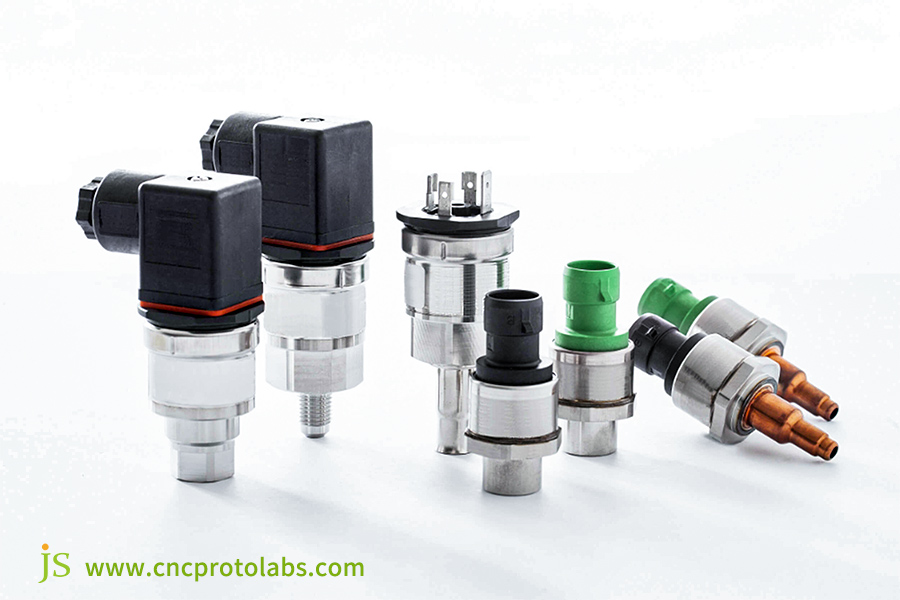
FAQs
Q1: Is the better the quality, the tighter the tolerances on my parts?
Not always. Overspecifying tolerances causes high cost. For example, diminishing tolerance of CNC turning parts from ±0.05mm to ±0.005mm could lead to an increase in cost per component from $10 to $35. This would also improve raw quality risk due to process instability. Best practice is to "set the loosest tolerance based on function" to meet requirements while balancing cost and complexity.
Q2: What do I do if I cannot find the tolerance for a specific dimension?
Two tenets can work: First, cite national standards (e.g., GB/T 1800.2) for recommended tolerances for standard mating sizes used commonly, e.g., the H7 and H8 grades commonly specified for CNC turning parts. Second, involve the machining contractor up front. JS Precision engineers, for example, will present cost-saving counsel and avoid rework and increased expense later on.
Q3: In what ways does the heat treatment process affect the finished tolerance of turned parts?
Heat treatment relieves stress and deforms, which contributes to the final size after finishing. For instance, Ø 20.1mm after rough machining of a stainless steel CNC turning part is decreased by 0.02mm to Ø 20.08mm after quenching. It is not an issue for deviations. Thus, heat treatment is performed after rough machining and prior to finishing for deformation compensation and tolerance assurance.
Q4: How is the "independence principle" or "inclusion principle" to be chosen when establishing tolerances?
The selection shall be based on the functional need of the CNC turning part. In the "independence principle," the dimensional and geometric tolerances are independent and distinct and serve their respective functions separately. It is suitable for parts with close size and shape tolerances, e.g., shafts of precision sensor cores. The "inclusion principle" says that dimension tolerances include geometric tolerances. It is suitable for parts with assembly clearance requirements, e.g., bearing and shaft fits.
Summary
Precision manufacturing is "machining and measuring," but much more. Tolerance control is a controlled process that incorporates design intelligence, materials knowledge, process philosophy, and quality management. To have a partner who understands this will give you more than qualified parts, it will also give you improved product performance, a project budget that won't get away from you, and valuable engineering experience.
JS Precision aims to be your partner in providing you with professional online CNC turning services. Simply post your part drawing, and we provide you with competitive CNC turning prices and simple ordering. We are able to help you achieve good quality CNC turned parts quickly with costs under control and easily resolve a variety of tolerance problems.
Disclaimer
The contents of this page are for informational purposes only.JS Precision Services,there are no representations or warranties, express or implied, as to the accuracy, completeness or validity of the information. It should not be inferred that a third-party supplier or manufacturer will provide performance parameters, geometric tolerances, specific design characteristics, material quality and type or workmanship through the JS Precision Network. It's the buyer's responsibility Require parts quotation Identify specific requirements for these sections.Please contact us for more information.
JS Precision Team
JS Precision is an industry-leading company, focus on custom manufacturing solutions. We have over 20 years of experience with over 5,000 customers, and we focus on high precisionCNC machining,Sheet metal manufacturing,3D printing,Injection molding,Metal stamping,and other one-stop manufacturing services.
Our factory is equipped with over 100 state-of-the-art 5-axis machining centers, ISO 9001:2015 certified. We provide fast, efficient and high-quality manufacturing solutions to customers in more than 150 countries around the world. Whether it is small volume production or large-scale customization, we can meet your needs with the fastest delivery within 24 hours. Choose JS Precision this means selection efficiency, quality and professionalism.
To learn more, visit our website:www.cncprotolabs.com


